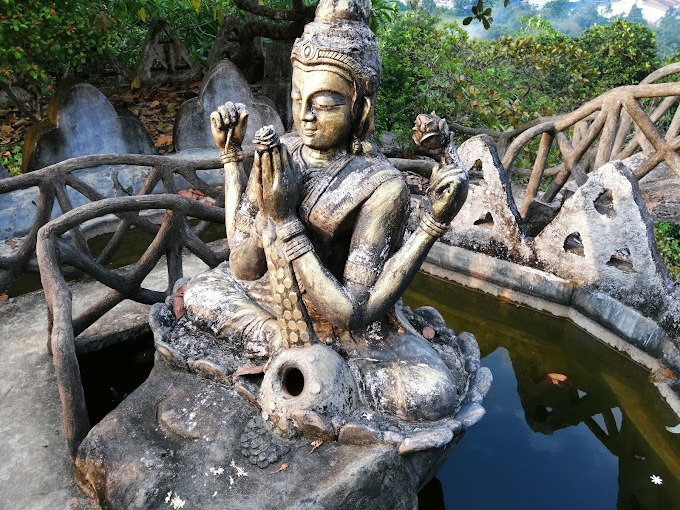- Area: Sri Lanka
- Type: Attractions
- Group: Buddhism Temple Viharaya
Mountains have always fascinated human imagination. And there we were gazing up at the wooded hill in front of us just a few minute’s drive from the city of Colombo. This was the Ambulgama Raja Maha Viharaya. Vaguely we could make out a series of lines or where the natural rock curved protectively to make caves. Rock caves that had once sheltered meditating monks. Right on top of the mountain was a small white building topped with a dagoba shimmering in the sun.
It was about 11.30 in the morning. Time- wise it was by far the worst to start climbing the wooded slopes, even though it was a short climb. The sun beat down fiercely on our bare heads. Yet something told us that the reward may outdo our hesitancy. Passing the viharaya, avasa-ge, and the bo-maluwa. which were situated at the bottom of the hill we started to climb up. Drenched with sweat we reached the first landing of flat ground.
Under the hood of a sizable rock were three images. Two of which looked like ancient images of the Lord Buddha in the standing and recumbent postures. Only the weathered brick base of these images were remaining. The plaster had long since fallen apart. A seated Buddha image could be seen in the same line of images which seemed to be in the process of being built.
A little aside yet on the same landing was the much more recent construction of a standing Buddha of immense height. Color washed in white the image of the epitome of peace watched majestically over the lush Kelany valley that spread around it. A narrow path led upwards passing another Lena where inside were the colorful depictions of the sath-sathiya. A little door led into the cave.









Further up and now through the ambiance of the forest trees that wooded the hill, we came across a scene of Mihintale, superbly blended with the jungle atmosphere The larger-than-life images brought to life the 3rd century BC event that changed the destination of Lanka. On a higher rock stood the grand figure of the great sage – Arahath Mahinda together with his disciples. On a lower rock stood King Devanam piya tissa dressed in his hunting clothes, looking up with wonder at the figures of the rahatans that called out his name. The deer that the king chased had not been forgotten by the sculptor. The deer stood alone and a little away on another rock landing. The whole scene freezes one awesome moment of history into the future.
The path now twisted and ran under huge boulders to reach the Vishnu Katharagama devale. From here the view over the valley was inspiring. Here we rested in the shadows of the protective gaze of the gods. Surrendering to the silence that seemed almost overwhelming. The only movement was that of squirrels and birds that scampered and twittered enjoying their fragile lives and ignoring us completely.
A little further up was the maha lena or big cave where the scene of the parinirvana of the Lord Buddha was depicted.. Once again the series larger than life statues, had captured the poignancy of the event. The disciples of the Buddha were shown standing around in deep remorse. The calm and quiet of the sorrow that engulfed that moment was penetrating.
From here the path curved upwards to the very summit to worship the Siripathula
The Ambulgama mountain where the Ambulgama Raja Maha Viharaya is situated is believed to have about 20 – 30 caves all of which face the east. In ancient times this site had been know by many names including Abaleva Vehera, Rangal Vehera, Ambiligama Vehera, and Abulhelu Vehera. A naga raja or king cobra is believed to be living at this site measuring some 15 feet in length.
According to some, the origin of this site dates to the times of King Devanampiyatissa.
Some believed that one of the bodhi saplings that sprang from the great Sri Maha Bodiya at the time of its planting in the Mahamavuna Garden and was said to have been planted in the village of Ambalewa could possibly be identified as this site. It is also debated that Maliyadeva Maharahatan who lived in the times of King Dutugemunu and preached in the Kelani Valley in a place known as Ambul Helu could be this site. Again it is said that King Wijayabahu 3 collected his army to fight against the Kalinga Maga forces in 1215 while residing at this site.

